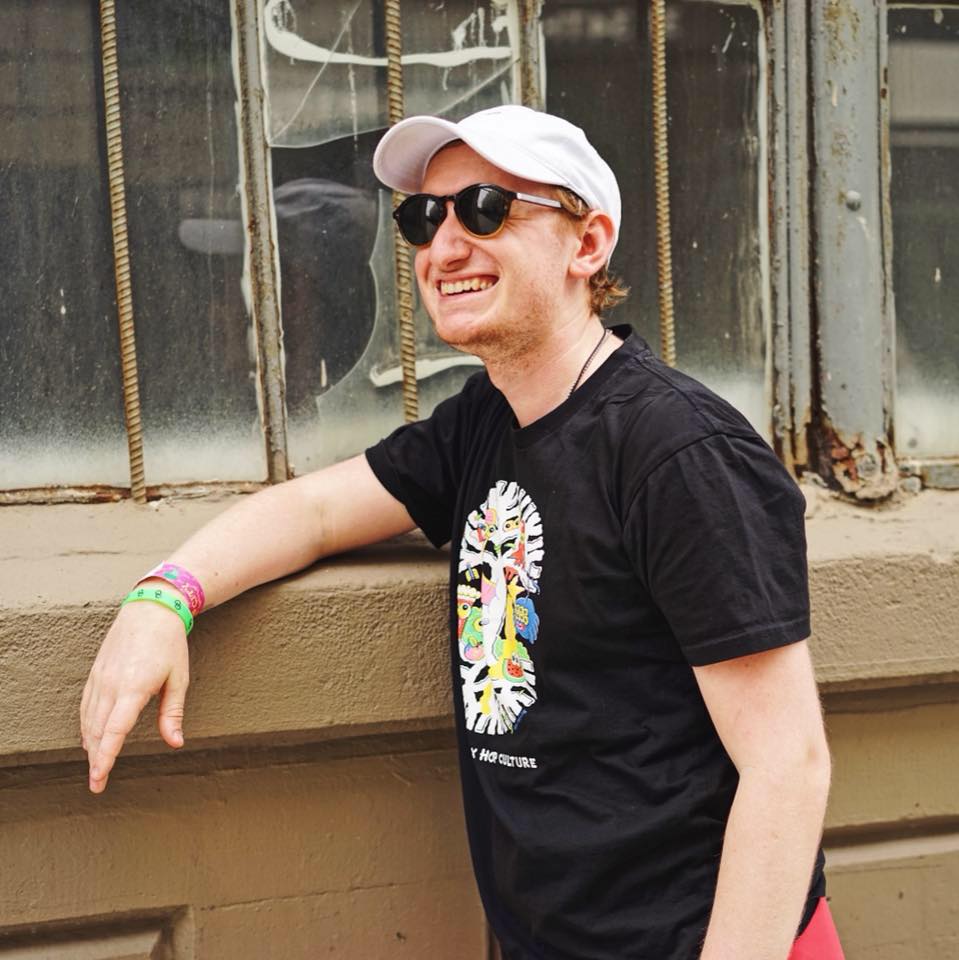Shop
Five Boroughs Brewing Wants to Make Beer for 8.5 Million People
Defining New York City craft beer.
A brewery for all boroughs. That’s the vision behind Five Boroughs Brewing Co., one of New York City’s newest breweries. It’s an audacious goal, but one that co-founders Blake Tomnitz and Kevin O’Donnell hope their months-old brewery can accomplish. In the short time after opening, they’ve hosted tastings and events across all five boroughs, steps necessary to make the brewery a household name. Head brewer Nick Griffin wanted the beer to reflect the tastes of New York, so he put it in front of as many New Yorkers as possible.
Five Boroughs provides an alternative to the elusive, juicy IPA craze that’s sweeping the nation. Of course they launched with an IPA (as every new brewer pretty much has to) but Griffin opted for a more bitter, and accessible, West Coast style IPA.
With his background in Quality Control at Southern Tier Brewing, Griffin is concerned with putting out clean, lasting beer. Five Boroughs is not relying on lines around the corner for the latest double dry-hopped double IPA. Instead, cans of their hoppy lager or pilsner are built to last on shelves around the city, for any New Yorker to pick up.
Griffin’s quality control starts in the taproom. The team built a lab to run in-depth tests on the beer before it ships off or pours through the tap lines. The taproom, located in the industrial neighborhood of Sunset Park, Brooklyn, doesn’t really stand out. The brick exterior matches the facades of the auto body shops that line the street. Often, cars are lined up on the sidewalk in front of the brewery waiting to be serviced next door. But inside, the place is abuzz. The taproom is sleek, bright, and spacious, with sunlight falling on exposed beams painted to mirror the cans they sell at the bar. From the loft stage above the taproom, bands fill the space with music. The taproom staff is as proud of the beer as the brewers; all the bartenders spend a brew day with Griffin.
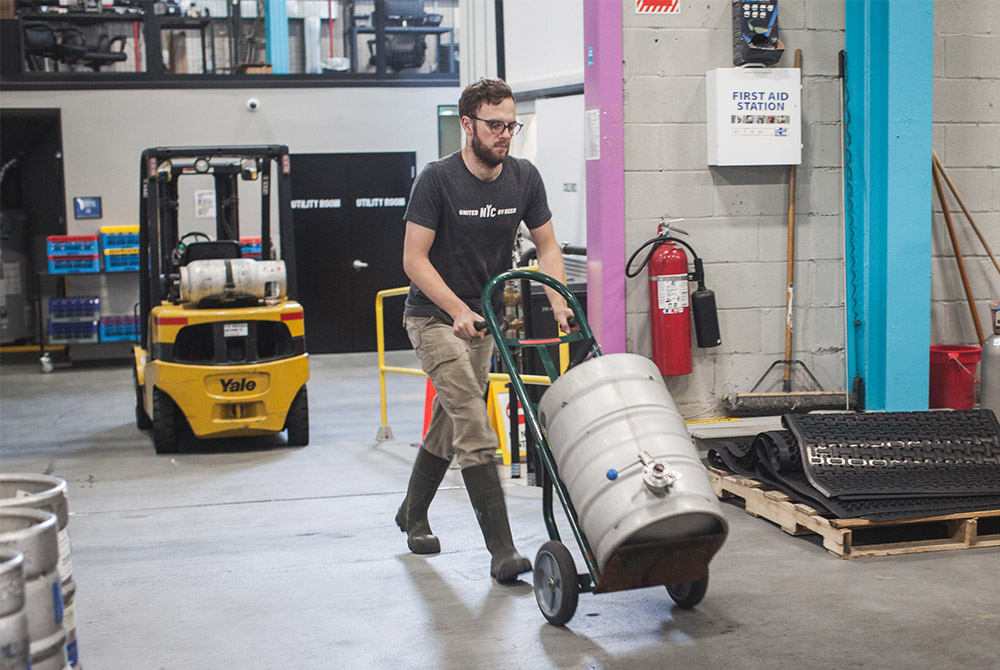
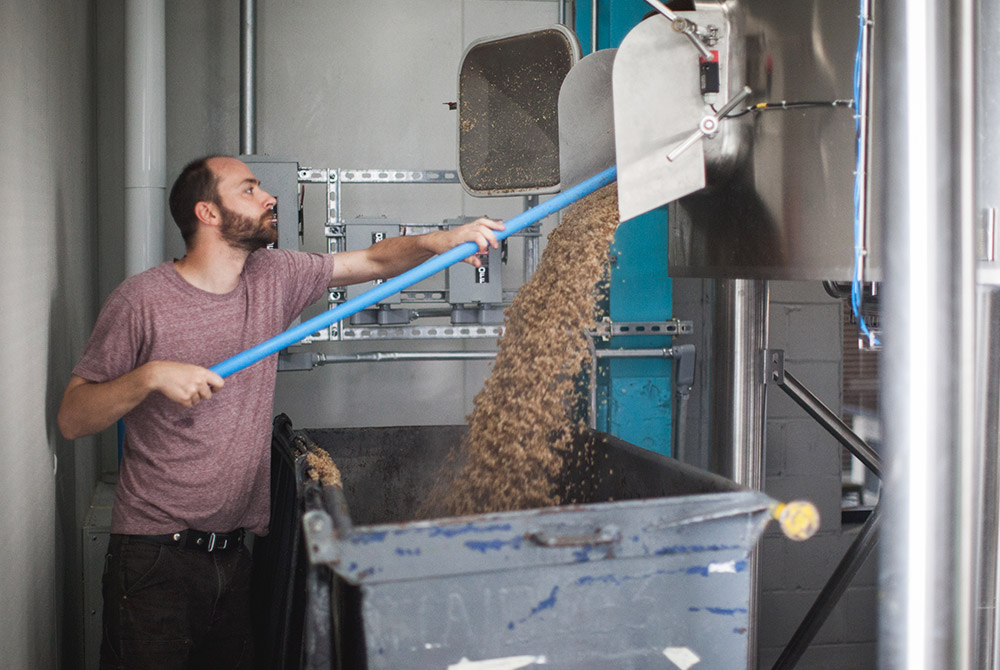
To describe it lightly, wanting to represent the tastes of NYC, a diverse city with a burgeoning beer scene, is ambitious. “Wouldn’t it be cool if there was a holistic beer concept for New York City, no matter what neighborhood or borough you’re from,” Tomnitz shared. Any brewery opening today lives in the shadow of the long lines that form at nationally-hyped breweries like Other Half. But Tomnitz, O’Donnell, and Griffin feel they’re entering the scene at the right time. They want to capitalize on the growth of beer in the city. There’s competition sure, but the demand is there.
Five Boroughs moved into a space big enough for future expansions; they want to brew enough to reach every corner of the city. By distributing their beer to every borough and bringing eager drinkers back to their taproom, Five Boroughs is hoping to both educate drinkers and attempt to define New York beer.
John Paradiso: What were you guys doing before Five Boroughs?
Blake Tomnitz: I started out in the corporate world. Actually, I started homebrewing in college but we got all of our equipment confiscated. Eventually, I went into banking and private equity, but beer was always in the back of my head. And while I was working in New York City I thought “Wouldn’t it be cool if there was a holistic beer concept for New York City, no matter what neighborhood or borough you’re from.” I was close with Kevin and we’d go to craft beer events together and eventually I asked him to help execute this idea with me.
Kevin O’Donnell: I didn’t brew in college but I was a bartender and worked in bars in Baltimore and then up in Connecticut. And they weren’t your typical college bar; they had some better draft lines and that was my introduction. I met Blake in the corporate world and we quit our jobs about two years ago and haven’t looked back since.
Nick Griffin: Prior to joining these guys I was the lead brewer at the Bronx Brewery and before that, I was a quality control tech at Southern Tier Brewing Co. Really I couldn’t imagine a better place to have as my first job in craft beer. They do everything right, from brewing through to packaging — it’s a really intense quality control program.
JP: Why’d you decide to open a taproom as well as a production facility?
BT: It’s the best location to interact with consumers immediately, to get live feedback. It’s the heart of the company. We get to talk to people and find out what New York City’s taste preferences are.
KO: And because we are such a new brand, the taproom is a place where, right out of the gate, people can be introduced to the brand. We’re growing our distribution efforts around the city but from day one we were open in the taproom and it was important to us to get that exposure.
JP: Can you talk about some of the aesthetic decisions for the taproom?
BT: It was about creating a clean, comforting space. We decided to utilize our brand colors to accent the old steel portions. We’re in a very industrial pocket of New York City so keeping that industrial feel, these big lofty ceilings, was important. We have five core colors which are based on five core designs. When we went through the design process, it was always “how do you distill New York City down to a brand.” That’s a very audacious endeavor…It’s a little abstract but each one of our designs represents one of the five senses. So it’s all about using that experience and all the senses you use when drinking a beer to go out and explore the city. We live in what we think is the greatest city in the world. The eccentricity and innovation that’s present in beer matches using your five senses to get out and see everything the city has to offer.
KO: We didn’t want to drywall the whole spot. We had some thoughts early on that, “We need to paint the brick, let’s accentuate and highlight stuff and bring in those steel panels for the walls.” We tried to keep it as authentic as we could without changing the aesthetic of the space. We kept the pipes exposed.
“Wouldn’t it be cool if there were a holistic beer concept for New York City, no matter what neighborhood or borough you’re from.”
JP: Maintaining the history.
BT: The first certificate of occupancy was in 1918 or 1919 so we wanted to give an old manufacturing space a new life. It wasn’t necessarily easy, but it was a rewarding process.
JP: How do you think that decision contrasts with the rest of the neighborhood?
KO: This neighborhood is still heavily industrial and that’s what we are. So we didn’t really change much by adding a retail component to it but, for the most part, it was an abandoned warehouse that we revitalized and brought back.
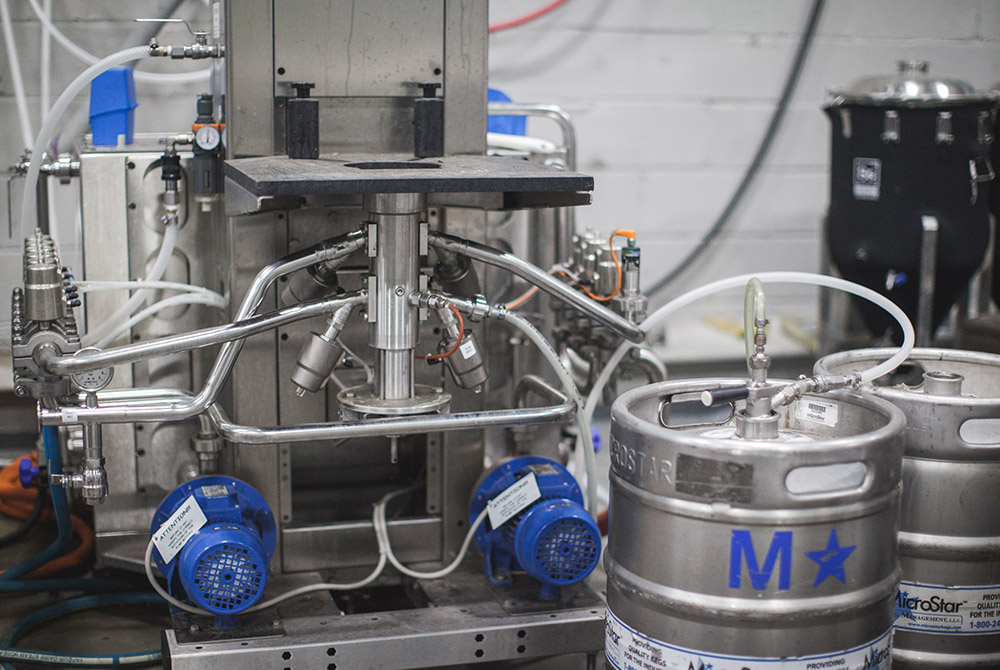
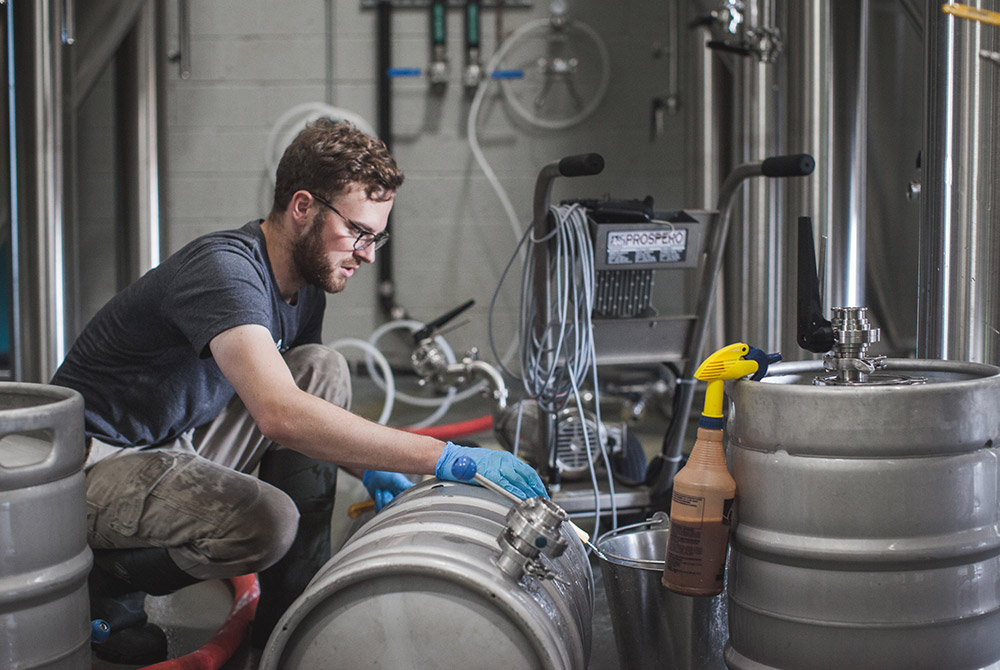
BT: As a consumer goods company, having the taproom is invaluable.
KO: With the things the city is doing, with the ferry they added in, transportation upgrades, it’s driving foot traffic; they’re finding out about us by exploring the neighborhood
JP: You’d talked about understanding the tastes of New York. What would you say defines those tastes?
NG: I think New York has a wide variety of tastes and that’s what defines New York. Someone that tries to fit all of New York into one little box is going to fail miserably. We try to embrace a little bit of diversity in our core portfolio, so we’re not only catering to the esoteric beer geek but also to the casual beer drinker.
BT: The way we structured our cores and occasional one-offs, we’re really trying to hit everyone on that consumer pyramid. Everyone from the intro craft drinker to the experienced drinker. Not only giving someone the opportunity but also having the ability to reach consumers is important and why we went with such a big space.
JP: How do you define the core lineup that you have?
BT: So it’s our pilsner, our gose, our IPA, and our hoppy lager. Then we have a few seasonal beers and the occasional one-off. We’re really trying to think holistically about all the different styles and what different kinds of consumers at different education levels are drinking. And giving them an option regardless of where they are in their craft beer journey.
JP: Where do you think people are in New York City in their craft beer journey?
NG: New York City is interesting. I think one of the most interesting things is how lager-centric all of New York City is. I think there are a lot of places in the country where everybody is drinking IPAs and they’ve been drinking IPAs for the past 15 years and I think now you can say that those places are starting to revert back to more drinkable styles. But from day one, New York City has always had a desire for highly drinkable pale lagers. And that’s why we decided to brew a pilsner as one of our core brands, which is a great volume driver for us.
JP: You came along in the wake of breweries pushing big IPA menus. Did that have any play in your decisions? Did you consider at all going heavy with IPAs?
NG: So, we considered a whole bunch of styles before we decided on the four. I don’t think what other breweries are doing influenced what we decided on for our cores whatsoever. I think we took two main things into consideration. First off, we went through this pretty intensive R&D process and we said, “Ok these are the beers that we should debate to make the core beers.” We knew that we wanted a pilsner. We knew that you had to have an IPA — but we made ours in a more west coast style just to differentiate ourselves from what’s being produced in the city. And then settled on the hoppy lager and the gose. The other thing that we considered was having a core portfolio that appealed to this wide variety of consumers. That being said, we’ll brew beers like DIPAs and some of these more special releases.
“When you launch in New York City you almost launch to the world.”
JP: Can you talk about the decision to represent not just your neighborhood but everyone across all five boroughs?
BT: We were thinking along the lines of, “What brings us all together” and that it didn’t matter what neighborhood or borough you’re from, but that this is New York City’s brewery. I think at the end of the day we had to have a brick-and-mortar somewhere. Now, it’s about making sure there’s consistent outreach to and involvement with all the boroughs and all the different communities. But it was really about bringing people together and saying, “Hey this is New York City’s beer.” Plus, making sure we could produce enough beer to reach everyone. Sometimes individuals are not able to be a part of a culture because they don’t have access to it. So for us, yes we have the taproom but more importantly, it was making sure we could produce high volumes of beer to reach the five boroughs. New York City is kind of an anomaly marketplace, so I think we have the opportunity to not only be a very large production facility but also a hyper-local brewery.
JP: Hyper-local to everybody.
BT: Yes, granted it’s the largest city in America but it’s still hyper-local and I think that’s what is really exciting.
JP: So you’re attempting to instill the idea that even though Five Boroughs the brewery isn’t in someone’s borough, they can still have ownership of it.
KO: That was sort of the point of our launch events. Going up to the Bronx, to Staten Island, to Queens, making sure we weren’t getting into just one place in the Bronx but multiple neighborhoods. Really introducing ourselves and saying, “Yes we brew the beer down in Brooklyn but we’re here for you, we’re here for all of New York.”
JP: How would you define the scene of craft beer in New York City?
BT: It’s exciting and it’s early growth right now. And I know that’s hard for some people to accept but when you look at the big scene and you look at where New York City is relative to other cities like San Diego or Denver we have so much room for growth. So I think right now it’s a really cool scene to be a part of; it’s collaborative by nature. We’re in the brewer’s guild, we’re all trying to figure out how do we continue to grow the scene, educate consumers, get people involved in craft beer.
KO: We also notice that a lot of breweries from outside the city look at New York City as a destination. So for us, collaborating with the rest of New York City’s breweries, how do we make sure that the city has a strong foothold, that the breweries in the city get a chance to showcase their beer.
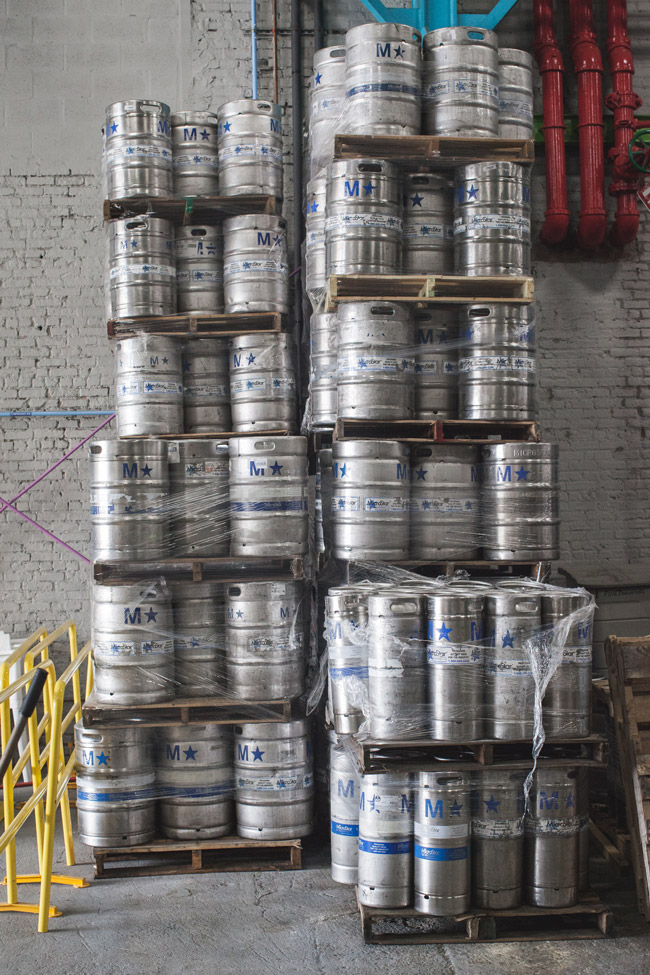
BT: When you launch in New York City you almost launch to the world.
KO: But we still see that people want to drink local beer.
JP: Why did you decide to launch with such a heavy focus on quality control?
NG: I think we all sat down and determined that the way we were going to run things in our brewery was according to our beliefs. We want all of the products that get released from Five Boroughs to be high quality and consistent every single time. We don’t want the person that’s ordering a pint at the bar or picking a 6-pack off the shelf to have any doubt in their mind that what they’re about to drink is high quality.
KO: Obviously there’s only so much we can do once the beer leaves our premise. So the idea was to do as much as we could while it’s in our control.
BT: When it leaves here, the beer is on a whole separate journey and I think we can only control so much, so now it’s this added education on making sure the beer is taken care of as soon as it leaves the facility — wherever it’s being stored, wherever it’s being poured. As consumers become more aware and as the American palate becomes more evolved, I really think so much will start to change about how beer is treated because people are going to get tired of sitting there and thinking, “This beer tastes off, this beer tastes weird.” It’s going to be more of an onus on the distributors and retail accounts to take care of beer. So I think there’s a lot of work to do. But quality is number one. We’re a consumer goods brand, you can’t get by without a priority of quality.
NG: I also think consumers are becoming more aware of what draft-line cleaning is. You’re even seeing at some bars, behind the menu or on the chalkboard it’ll say, “Our lines were cleaned on this date.” So just the fact that bars are starting to take things seriously is a really good step in the right direction.
BT: And it’s a shame because someone could have a bad IPA, from anyone, and just swear off all IPAs. And that’s unfortunate.
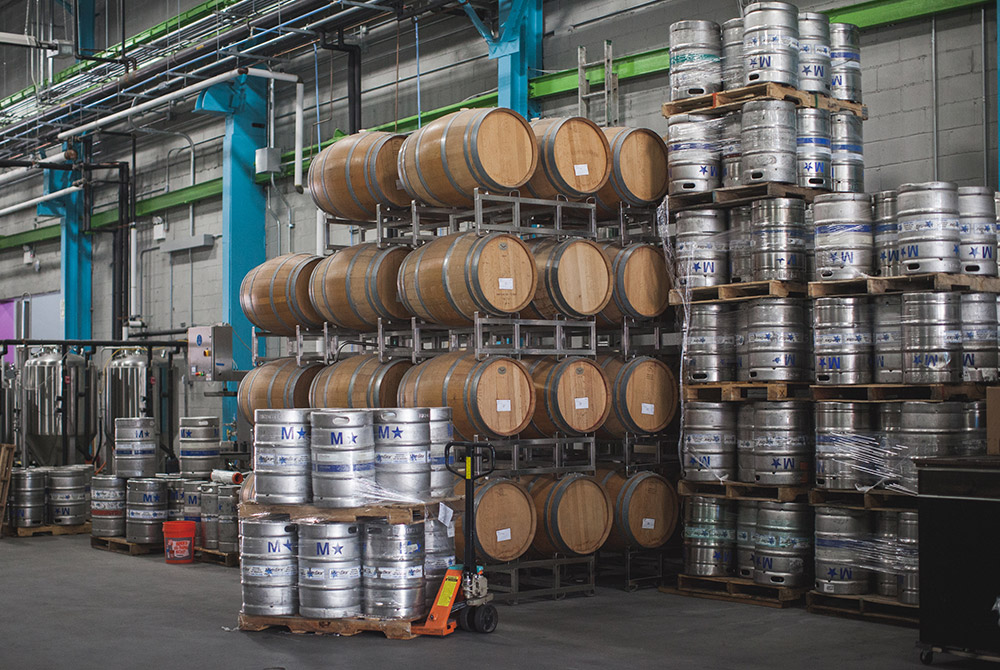
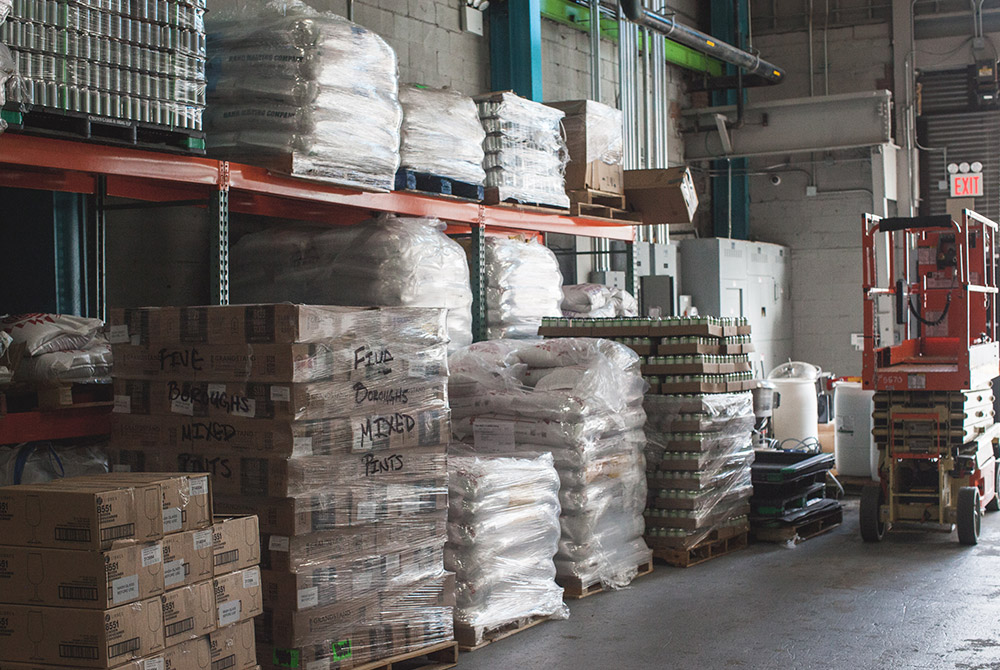
JP: What are some of the steps for educating consumers that you take here in the taproom?
KO: Because we get such a wide range of drinkers here, we make sure that our staff is able to speak to all levels of experience. A big thing for us is having all of our staff be certified beer servers. We don’t have TVs in here so there are limited distractions and interactions can happen between the taproom staff and the consumer.
NG: And all of our servers actually go back and brew a beer with me. So they get a cool, hands-on experience and, when the beer comes on tap, it lets them say, “Oh hey I brewed that beer.”
“Someone that tries to fit all of New York into one little box is going to fail miserably”
JP: Why did you make the decision to build the brewery in a space big enough for expansion?
KO: We learned that a lot of breweries run into constraint issues and they run out of space and have to start looking for new spaces.
BT: Prudence was a big part of it. We tried to think of every single variable and what would be the most conducive set up to allow us to grow. Our vision to be the quintessential New York City brewery is an audacious goal and we wanted to make sure we set ourselves up for success
KO: And we’re confident in the growth. It was a risky decision to get a space that had that growth but it was a risk we didn’t take lightly and we’re confident it’ll lead to success for us.
JP: What do you think that success looks like? Do you think it’s everybody having that personal identity to Five Boroughs or is it something else?
BT: Historically people would ask, “What is New York City beer” and no one had a straight answer. And for us, it was, “How do we sit there and create a brand that when people think of New York City beer they think of Five Boroughs.” That’s one of the aspects of success for us. Another one is just making sure we produce enough beer to reach all corners of the five boroughs and try to get as many people involved.
KO: The answer to the question what is New York City beer is a long-term goal for us. But a goal we’d love to reach.


